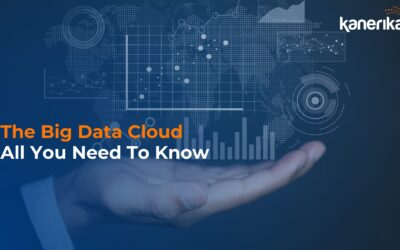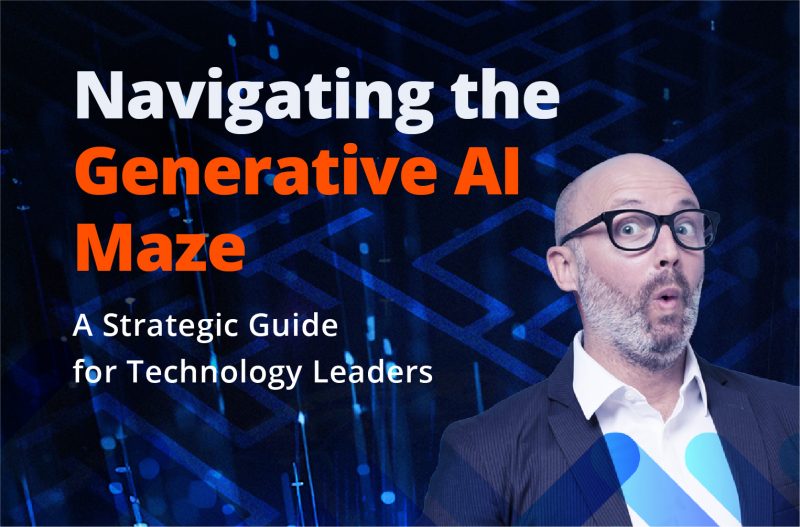Data management challenges can affect a host of concerns. Poor risk management decisions, data loss, data breaches, illegal access, data silos, noncompliance with legislation, an unregulated environment, a limited number of resources, and so on are examples of these.
Businesses all around the globe are becoming increasingly reliant on data to operate their day-to-day operations and make educated business decisions. With so much data being created, managing data throughout the enterprise, which may be dispersed over different geolocations and using tens of business line applications, has become challenging.
Implementing best practices for data management (DM) can help organizations overcome its associated challenges. In addition, organizations should also follow the latest data management trends to get the most out of their most essential asset. Effective data management is a critical pillar for modern businesses, from ensuring the integrity and quality of data to navigating complex data landscapes.
This article explores the data management challenges and offers insights into how organizations can navigate these challenges to harness the full potential of their data.
Data Management Challenges
Managing data effectively is a complex task that modern businesses face, with challenges ranging from technological hurdles to regulatory compliance. These challenges can significantly impact an organization’s ability to make informed decisions, secure sensitive information, and operate efficiently. Here are some key challenges in data management:
1. Quality and Accuracy:
Ensuring that data is accurate, complete, and consistent is a major challenge. Poor data quality can lead to incorrect decisions and inefficient processes.
2. Data Integration:
Integrating data from various sources, often in different formats, is a significant hurdle. This integration is crucial for providing a comprehensive view of business operations.
3. Data Security:
Protecting data from breaches and unauthorized access is increasingly difficult in the age of cyber threats. Ensuring data security is paramount, especially with sensitive and personal data.
4. Compliance and Privacy Regulations:
Adhering to various data privacy laws like GDPR or HIPAA is a challenge, especially for global companies operating in multiple jurisdictions with different regulations.
5. Data Accessibility:
Making data accessible to the right people at the right time, while ensuring security and privacy, is a delicate balance that needs to be struck.
6. Volume and Complexity of Data:
The sheer volume of data and its complexity can be overwhelming, requiring advanced storage and analysis tools.
7. Data Governance:
It is a complex task to establish clear policies and procedures for data management, including who has access to what data, how it can be used, and how it is protected.
Also Read – Guide to Data Governance
8. Limited Resources:
Many organizations face limitations in terms of budget, technology, and skilled personnel, making efficient data management challenging.
9. Technological Evolution:
Keeping up with rapid technological changes and implementing the latest data management solutions can be difficult for organizations, especially smaller ones.
10. Data Silos:
Breaking down data silos within an organization to ensure a unified approach to data management is often a significant challenge.
11. Change Management:
Adapting to new data management systems or processes requires effective change management to ensure smooth transitions and user adaptation.
12. Data Lifecycle Management:
Managing the entire lifecycle of data, from creation to disposal, is a complex process that needs to be carefully handled to ensure data integrity and compliance.
Solving Key Challenges in Data Management
1. Centralizing Data for Efficiency- Key Step towards Data Management
Centralizing data involves consolidating data from various sources and systems into a single, accessible repository. This approach offers numerous benefits and can significantly enhance an organization’s data management capabilities.
Centralizing your data has several benefits. Firstly, it allows you to extract real-time analysis easily. Scattered data will make extracting real-time analysis a challenging task. Analysts can’t access and analyze the data and drive real-time analysis. You can easily get real-time analysis when you get all the data in one place. You can monitor your strategies and evaluate them to increase your performance efficiently.
Secondly, harmonizing the data and preparing it before analyzing it is essential. Data Preparation is a profitable solution to unite all data formats from various sources. You can easily extract full-scale insights and achieve your company goals. Multiple data sources can be challenging, but you can overcome this challenge by centralizing your data.
Thirdly, sharing information is a quick trick of creating data sets for each unit in your company. You can even illustrate your information and get benefits. You can secure the data sets and give access to the relevant people only with no trouble. By doing so, you can share the data while securing it. This enables sharing the business sales stats and other information to analyze customer and market behavior. Predicting the trends will be perfectly profitable to perceive business goals.
2. Tips to Manage Data Sources
Managing multiple data sources effectively is crucial for organizations to maintain data integrity, ensure accuracy, and derive meaningful insights- critical for effective data management. Here are some tips for managing multiple data sources:
- Establish a Data Governance Framework: Implement a clear data governance strategy that outlines data responsibilities, standards, and policies.
- Standardize Data Formats: Standardize the format, nomenclature, and structures across different data sources to ensure consistency and compatibility.
- Implement Data Integration Tools: Utilize data integration tools to seamlessly combine data from various sources, making it easier to analyze and manage.
- Automate Data Collection and Processing: Use automation to streamline data collection and processing, reducing manual errors and saving time.
- Regularly Audit Data Quality: Conduct regular audits to ensure data accuracy and consistency across sources.
- Utilize a Centralized Data Warehouse or Data Lake: Store data from multiple sources in a centralized data warehouse or data lake for better accessibility and analysis.
Also Read- Efficiency And Security: FLIP’s Dual Superpowers For Data Operations
- Ensure Data Security and Privacy Compliance: Apply robust security measures and ensure compliance with data privacy regulations across all data sources.
- Optimize Data Storage: Efficiently manage data storage, considering both on-premises and cloud-based solutions, to handle the volume of data from multiple sources.
- Foster Cross-Departmental Collaboration: Encourage collaboration across departments to ensure data management strategies align with organizational goals.
- Invest in Training and Development: Train team members on best practices for managing and utilizing data from multiple sources.
- Utilize Metadata Management: Keep track of metadata to understand the source, usage, and changes in data over time.
- Implement Advanced Analytics Tools: Use advanced analytics and business intelligence tools to extract insights from the integrated data.
- Create a Responsive Data Management Team: Have a dedicated team responsible for managing, monitoring, and responding to issues related to multiple data sources.
- Embrace Continuous Improvement: Evaluate and improve data management processes to adapt to changing data needs and technologies.
Case Study- Data Consolidation and Reporting Using Power Bi for a Leading Food Manufacturing Company
3. Solutions for Other Data Management Issues:
i. Data Quality and Accuracy:
Organizations should implement robust data validation and cleansing processes to address data quality and accuracy. This involves regularly auditing and updating data to ensure it remains accurate, complete, and reliable. Automated data quality tools can be employed to streamline this process.
ii. Data Integration:
Overcoming data integration challenges requires robust tools and platforms. Organizations should also establish standardized data formats and protocols to facilitate smoother data integration from various sources, ensuring consistency and compatibility.
iii. Data Security:
To enhance data security, organizations must implement advanced cybersecurity measures such as encryption, access controls, and regular security audits. Additionally, regular training and awareness programs for staff on data security best practices are crucial in safeguarding data against breaches and unauthorized access.
iv. Regulatory Compliance:
Maintaining regulatory compliance involves staying updated with the latest data protection laws and implementing regular compliance checks and audits. This ensures adherence to regulations like GDPR or HIPAA and helps avoid legal and financial penalties.
v. Data Accessibility:
Improving data accessibility involves developing a clear policy defining who can access what data and when. Implementing user-friendly data management systems can also make data more accessible to people at the right time while maintaining security and privacy.
vi. Volume and Complexity of Data:
Managing large volumes and complexity requires investing in scalable data storage solutions such as cloud storage or advanced database systems. Utilizing advanced data analytics tools can also help efficiently process and analyze complex datasets.
vii. Data Governance:
A comprehensive framework is key to effective data management. This includes assigning data stewards and defining clear roles and responsibilities for data handling, ensuring consistency and accountability in data management processes.
viii. Resource Limitations:
To deal with resource limitations, organizations need to optimize resource allocation, focusing on the most critical data management needs. Exploring cost-effective solutions such as cloud services or outsourcing certain data management functions can also be beneficial.
ix. Technological Challenges:
Addressing technological challenges involves continuously updating and upgrading the organization’s infrastructure to keep pace with evolving data management technologies. This should be coupled with ongoing training and development for staff to stay adept at using new technologies.
x. Change Management:
Effective change management is crucial when adapting to new data management systems or processes. This involves clearly communicating the changes, providing adequate employee training, and gradually implementing changes to ensure a smooth transition and user adoption.
Data Management Case Study
Client- Leading Food Manufacturing Company
- 20% Improved Business Performance
- 30% Increase in Productivity
- 50% Reduction in Data Integration Time
About Client
The client is an edible oil manufacturer and dealer using the SAP system for all the company’s major transactions. It has plants across the country with suppliers and distributors. Oil production, distribution, and sales data was recorded in the client’s SAP and non-SAP systems used by the suppliers and distributors, mostly carrying the secondary sales data. It was extremely challenging for the client to combine the data across the systems and provide real-time reports on sales, deliveries, payments, and distribution, thus making it difficult for the client to make business decisions.
Challenges:
- Inconsistent and delayed insights due to dispersed SAP and non-SAP data, hindering accurate decision-making
- Synchronization issues arising from the integration of financial and HR data, causing inefficiencies and errors
- Labor-intensive manual integration efforts, error risks, and process inefficiencies impacting productivity and costs
Solutions:
- Consolidated and centralized SAP and non-SAP data sources, providing insights for accurate decision-making
- Streamlined integration of financial and HR data, ensuring synchronization and enhancing overall business performance
- Automated integration processes to eliminate manual efforts and minimize error risks, saving cost and improving efficiency
Technologies Used:
Power BI and Azure
FAQs
What are the common challenges faced while dealing with large amounts of data?
- Data storage: Storing large amounts of data can be expensive and requires specialized infrastructure.
- Data processing: Processing large amounts of data can be time-consuming and requires powerful computing resources.
- Data quality: Ensuring the accuracy and completeness of large datasets can be difficult and time-consuming.
- Data security: Protecting large amounts of sensitive data from unauthorized access and cyber threats is a major challenge.
How can big data analytics help in decision-making processes?
- Improved accuracy: Big data analytics can help organizations make more accurate predictions and forecasts.
- Better decision-making: By providing insights into customer behavior, market trends, and other factors, big data analytics can help organizations make better decisions.
- Increased efficiency: Big data analytics can help organizations identify inefficiencies and streamline processes.
What are some examples of big data, and how are they used today?
- Social media data: Social media platforms generate vast amounts of data that can be analyzed to gain insights into customer behavior and preferences.
- Sensor data: Sensors embedded in various devices generate large amounts of data that can be used for predictive maintenance and other applications.
- Healthcare data: Electronic health records and other healthcare data can be analyzed to improve patient care and outcomes.
What are the major challenges in implementing big data analytics in healthcare?
- Data privacy: Healthcare data is highly sensitive and must be protected from unauthorized access.
- Data quality: Ensuring the accuracy and completeness of healthcare data can be difficult.
- Data integration: Healthcare data is often stored in multiple systems and must be integrated to provide a complete picture.
- Regulatory compliance: Healthcare data is subject to strict regulatory requirements that must be followed.
What are the key challenges faced while building a data platform?
- Scalability: The platform must be able to handle large amounts of data and scale as needed.
- Flexibility: The platform must be flexible enough to accommodate different types of data and use cases.
- Security: The platform must be secure and protect data from unauthorized access.
- User experience: The platform must be easy to use and provide a good user experience.
What are the 5 V's of big data and how do they impact data analysis?
- Volume: The amount of data being generated and stored.
- Velocity: The speed at which data is being generated and processed.
- Variety: The different types of data being generated and stored.
- Veracity: The accuracy and completeness of data.
- Value: The insights and value that can be derived from data.











